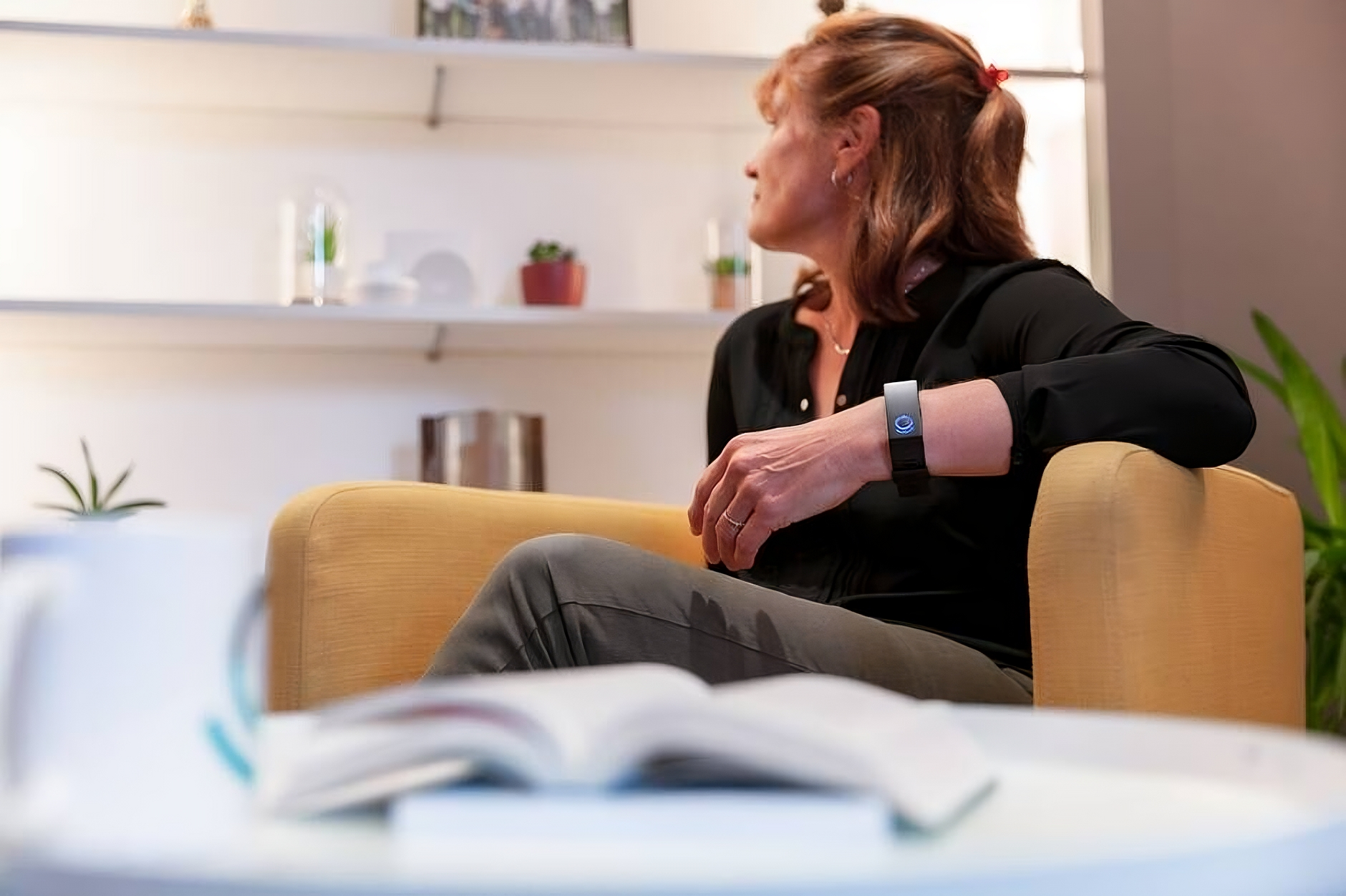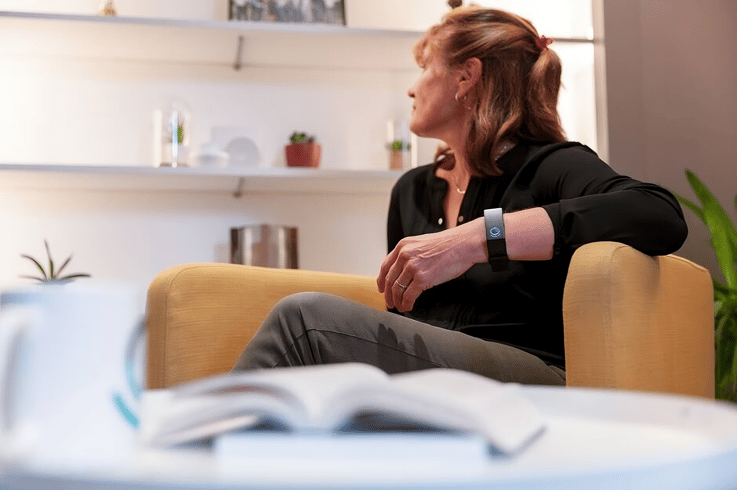
A Guide to Developing Remote Patient Monitoring Software

Finally. With recent surveys showing patients' interest in sharing health data with medical professionals at 96% and telemedicine becoming the preferred channel for prescription care at the 80% adoption mark, it certainly feels like we’re more and more allowing technology to fill our health needs and support our health journey.
So, perhaps now is the right time to talk (or, in this case, write) about taking a step further to build a unified system that ensures data accessibility, security, and privacy. But how to create such a system when companies work independently?
The first step may just be openly sharing best practices and guidelines for digital product development.
Patient zero: remote patient monitoring software - allowing patients to perform self-testing, self-examination, and health status surveillance. What is the best way to build it?
The stakes: are global. Every country faces limitations in patient care due to doctors’ availability, hospital infrastructures’ capabilities, and healthcare budgets. Medical professionals agree that the right path lies in shifting the global mindset toward prevention.
The claim: is simple. Prevention can be profitable. But tracking the impact of patients who did not get sick starts with devices embracing the prevention mindset.
Clickable table of contents:
Remote patient monitoring software development
Connectivity
Accuracy
Security
Legal regulations & financial benefits of remote patient monitoring technology
Conclusion: human element is the key
[Disclaimer: If you’re thinking of creating remote patient monitoring apps, or want to learn tips, guidelines, and insights about the process, this article is for you. But if you’re well into the process and you're already familiar with the main challenges, treat the following text as the beginners’ guide. A complete list of sources is available at the end of the article.]
Remote patient monitoring software development
The approach to developing remote patient monitoring software varies depending on the conditions the given solution aims to monitor and the device (hardware) being used. HealthTech and IoMT rely on various enabling technologies, yet, most of them include similar components and should center around 3 main areas: connectivity, accuracy, and security.
Tip no.1: Dive deep into your market research. Find your competitive advantage, and learn from the top remote patient monitoring companies - their successes and failures.
 One of the prime examples of remote patient monitoring technology co-developed by Untitled Kingdom is the chronic pain management device Remedee Labs. An endorphin stimulator in the form of a wristband connected to a digital platform to contact specialists.
One of the prime examples of remote patient monitoring technology co-developed by Untitled Kingdom is the chronic pain management device Remedee Labs. An endorphin stimulator in the form of a wristband connected to a digital platform to contact specialists.
Connectivity
The crucial component for any remote patient monitoring technology is a wireless-enabled sensor. It’s a device that detects and responds to input from the physical environment. It can measure specific physiological parameters and store the data it collects. That storage is connected to additional sensors, related applications, and healthcare provider databases.
Until recently, patients needed to manage different devices and self-report forms. Though that approach often brought valuable results, it was often limiting, inconvenient, and difficult for both patients and doctors. Now, near-field communication technologies and Bluetooth Low Energy (BLE) allow a single device to act as an on-body hub, like pulse oximeters, blood glucose meters, and heart monitors. It’s a great solution, but it can also be…
…a double-edged sword. BLE achieves power consumption that is low and optimized, but at the same time, it’s not designed for large amounts of data transmission. Instead, it's sending small amounts of data at low transfer speeds.
At Untitled Kingdom, during the development of an application for a wireless ultrasound, to reduce the time for over-the-air (OTA), we created a blend of different data transfer protocols - BLE together with TCP/UDP (TCP - Transmission Control Protocol, UDP - User Datagram Protocol).
Tip no.2: There’s no way around it, don’t work with software developers. Instead, work with experts who think outside of the box. As one of the UK's iOS developers pointed out when writing about Bluetooth Low Energy, even if you do your reading, it will not help you avoid errors.
Accuracy
Presenting large volumes of data to healthcare staff is not valuable, but presenting salient data that allows earlier action is. Remote patient monitoring services don’t just provide patients and medical professionals with data; they offer an interface to track or analyze the data and display treatment recommendations. So they often allow artificial intelligence and machine learning to scale and generate early warnings.
To do that, a device must be accurate. Not just what you and your team may consider as accurate, but actually reviewed for accuracy with disclosed areas of inaccuracy. When conducting such a review, it’s worth taking into consideration the following:
- Out-of-Date Information
Medical knowledge is constantly evolving. Be vigilant about updating RPM devices to the most current standards.
- Incomplete information
Even if the data sent back to medical professionals is accurate, if it excludes only key pieces of information, it may be… inaccurate. Example: in 2019, a study of 14 applications for prostate cancer education found that only 1 included the full breadth of information in the American Cancer Society Prostate Cancer Prevention and Early Detection Guidelines.
But it’s also about collecting and asking for the right data. In 2017, an analysis of 2,431 sleep self-management apps showed that 2,358 were unrelated to sleep management. Instead, they only provided alarm service or played relaxation sounds in an attempt to improve sleep. And none of them allowed users to include intake of chemicals like caffeine and alcohol, which are proven to affect sleep.
- Inaccurate Sensors and Connected Devices
Even the top remote patient monitoring companies may use or be connected to inaccurate devices and sensors. Unfortunately, that is often the case with applications developed for wearables.
Between applications connected to sensors on a mobile device (e.g., smartphone, smartwatch, multifunctional wristband) and these connected to the external hardware (e.g., blood pressure machine, heart rate monitor), unsurprisingly, it’s the sensors that are intended and designed to be used in the medical context that end up collecting valid and reliable data.
- Inaccurate Outputs and Treatment Recommendations
Doctors’ diagnosis relies on the accuracy of the outputs of remote patient monitoring apps. So beyond processing accurate data, it’s important to validate information that patients enter. Check for incomplete information. Give users a chance to review what they are sending to medical professionals.
This was the most valuable ingredient for one of the Untitled Kingdom projects - a chest strap for reliable heart rate variability data. A research on data gathering, market comparison, and tech analysis of existing devices turned what started as a data collection app into a Patient Companion App. A clear user path giving a chance to review, recollect, and verify data allowed for collecting even bigger amounts of parameters than initially planned.
Tip no.3: Develop your solution's specific, risk-stratified regulatory pathway. Make sure to set up a reporting framework, so patients and doctors can report potential accuracy concerns.
Security
No data is more sensitive, personal, and intimate than health data. And by definition, the information collected by remote patient monitoring apps must be sent and stored in a secure database that patients and medical professionals can access. Needless to say, patients’ private information must be protected, and patients must be able to opt-in and out of key privacy options. What does that mean in practice?
First, consider where the remote patient monitoring services are meant to be used. For example, data privacy laws in the USA are regulated by the Health Insurance Portability and Accountability Act of 1996 (HIPAA), as well as states with their own privacy laws, such as the California Consumer Privacy Act of 2018 (CCPA).
Secondly, take proactive measures to protect the IT infrastructure. Study the risk mitigation strategies and adapt to them with your development team. Multiple reports show that human error is the leading cause of cybersecurity breaches proving that a "lapse of judgment" can happen to anyone. The best approach is to set specific security protocols, increase awareness of possible threats, and build well-designed architecture for accessing data.
Tip no.4: If you’re considering collaborating with a group of specialists, ask about their Security Policy. To know what questions to ask, consider downloading this free, helpful 8-page pdf- Cybersecurity Checklist: 60 Questions to Improve Security in Software Development.
Legal Regulations & financial benefits of remote patient monitoring technology
Legal regulations
Any of the top remote patient monitoring companies would confirm that (outside of technical difficulties) the legal regulations are the most challenging and impact on building and releasing medical devices. Especially medical certification often becomes a bottleneck in the process.
Healthcare is one of the most regulated industries in the world. In the United States, all medical apps are under the jurisdiction of the US Food & Drug Administration. If your app runs afoul of any regulations, it risks being removed from the marketplace, shut down permanently, fined by the FDA, or consumers could even sue you.
The remote patient monitoring device must meet the FDA's definition of a medical device as described in section 201(h) of the Federal, Food, Drug, and Cosmetic Act, which states that “remote patient monitoring device must digitally and automatically upload patient physiologic data.”
Tip no. 5: Since the medical certification process demands plenty of time and resources, consider developing an initial lifestyle device and focus on releasing your solution. Depending on the functionality of your app, medical certification may be easier with patients' and doctors' insights.
Financial Benefits of Remote Patient Monitoring Technology
And lastly, RPM doesn't just deliver clinical benefits. It provides economic benefits to patients and healthcare providers. Updates and reimbursement guidelines by the Centers for Medicare & Medicaid Services (CMS) outline coverage rules that need to be followed by most of the private insurance companies in the US.
American patients can expect RPM costs to be covered at 80%. Meanwhile, for organizations, a remote patient monitoring patient can earn a practice between $120 to $210 per month. So with a practice enrolling 50 patients into the RPM program, it all may add up to $72,000 annually.
Tip no. 6: If you’re considering the long-term benefits of launching a remote patient monitoring technology (beyond better health of patients), study official billing guides and up-to-date and Current Procedural Terminology codes.
And if you want to hear more about the benefits of RPM programs, watch the video below:
When diving into the guidelines for developing remote patient monitoring software, it’s easy to focus on technology. Yet, these solutions never meant cutting out the human element, far from it.
With real-time, accurate data on patient health, medical professionals and healthcare managers can prioritize depending on patients' needs. Devices allow patients to report symptoms, receive medication reminders, review educational material, and even visit with their doctor via video. But it’s people who actually lead the change, take an active part in developing these solutions, and empower patients.
The list of guidelines above could include even more topics, such as accessibility (developing solutions that neurodivergent users could use), usability (the populations most in need of an effective alternative healthcare service often lie in rural, underserved communities with no Internet access), and detailed privacy guidelines and RPM examples and case studies.
This only proves that designing remote patient monitoring services means an infinite list of key factors that need to be considered.
Which only proves that if you're developing remote patient monitoring software, your main question may just be: what team is the right fit for me to navigate this process?
—
Estimate the budget and map out the development path of your device. Fill in the contact form and share your technical struggles.
It costs nothing to talk.
—
Main resources:
- Conversations with Android Team Lead with over 8 years of experience, Maciej Tomczyński - thank you for your help & patience!
- Remote Patient Monitoring – Now or Never - report by MedTech Europe (accessed June 16, 2023).
- The technology, devices, and benefits of remote patient monitoring in the healthcare industry life - Insider Intelligence article (accessed June 16, 2023).
- 2023 Remote Patient Monitoring Billing Guide, Prevounce report (accessed June 16, 2023).
- From facility to home: How healthcare could shift by 2025, McKinsey & Company (accessed June 16, 2023).
